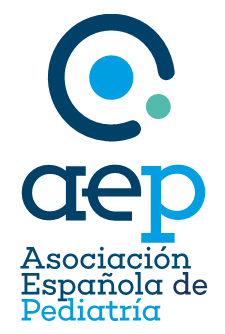Intraosseous vascular access is essential in pediatric emergency care, as it provides rapid venous access through a noncollapsible entry point.1–3 Various devices with different insertion techniques and different needle lengths are available to establish intraosseous access.1,2 When using the EZ-IO power driver and the BIG bone injection gun, needle length selection is based on weight and age, respectively. The technical datasheet for the EZ-IO recommends the use of needles measuring 15 mm for patients weighing 3–39 kg, 25 mm for those weighing up to 3 kg and 45 mm for those weighing 40 kg or more. For the pediatric BIG, the recommendations for needle length are 5–7 mm for children aged 0–3 years, 10–15 mm for those aged 3–6 years and 15 mm for those aged 6–12 years. However, there is no scientific evidence to support these recommendations. Therefore, selecting the appropriate needle length poses a challenge, and there is growing concern about complications such as extravasation.4,5
With the aim of describing the correlation between the ultrasound measurement (USM) of subcutaneous tissue in the proximal tibia insertion site for IO access and patient weight, age and body mass index (BMI) for the purpose of estimating, based on the measurement, the probability that a hypothetical intraosseous needle is too short, we conducted a study with correlation analysis in a convenience sample of patients aged up to 14 years managed in a pediatric emergency department in 2021. We excluded patients with fractures in the lower extremities, skeletal diseases, triage levels 1–3 or who did not provide consent.
Measurements were performed by identifying the hypothetical insertion site in the proximal tibia3 and measuring the distance from the epidermis to the periosteum by ultrasound with the patient lying in the supine position with the knees extended. Two pediatric emergency medicine physicians with experience in clinical sonography took measurements independently, and the agreement between them was assessed by means of the intraclass correlation coefficient (ICC). We used the Spearman correlation coefficient to assess the association between the USM and patient weight, age and BMI.
We estimated the percentage of needles that were too short by comparing the recommended length to the USM plus 5 mm (the safety margin established for the EZ-IO, with the black mark closest to the hub visible above the skin). When the directions allowed for different needle lengths for the same age, we used the longest option for the comparison. The sample consisted of 237 patients, with a mean (SD) age of 4.7 (4.1) years (median, 3.3; range, 0.1–14) and a mean (SD) weight of 21.5 (16.8) kg (median, 15; range, 3.4–100). The ICC was 0.960 for individual measurements (95% CI, 0.935−0.975) and 0.979 for average measurements (95% CI, 0.966−0.987). In both cases, the agreement was statistically significant (P < .001).
The mean (SD) USM was 10.6 (3.3) mm (median, 10; range, 4.5–29.3). The Spearman correlation coefficient for the association with the USM was 0.324 for the weight; 0.214 for the age and 0.683 for the BMI. In the EZ-IO analysis (n = 237), in the group of patients weighing 3–39 kg (n = 204), the 15 mm needle was too short in 88 cases (43.1%). The 25 mm needle was sufficient in all cases. However, in patients weighing 40 kg or more (n = 33), the 25 mm needle was too short in 5 cases (15.2%), all corresponding to patients that were overweight or obese (mean [SD] BMI, 30.7 [3.1]). In the pediatric BIG analysis (n = 227), the needle length was too short in 73.1% of cases: 100% in the group aged 0 to 2 years, 26.4% in the group aged 3–5 years and 67.6% in the group aged 6–12 years.
The excellent interobserver agreement validates the use of sonography to measure subcutaneous tissue thickness. As variables associated with thickness, we found a moderate correlation with weight and a weak correlation with age. On the other hand, although the correlation with the BMI was stronger, it is not very applicable in practice, although it is relevant in patients with high BMIs.
The EZ-IO analysis suggests that the 25 mm needle may be adequate in patients weighing up to 3 kg, although it may be too short in patients with a high BMI, and it is not possible to determine whether they may be too long by means of ultrasound. The 15 mm needle may be too short in a high percentage of patients weighing 3–39 kg. The pediatric BIG, on the other hand, offers shorter-than-needed needle lengths and could pose a safety issue, especially for children aged 0–3 years.
The findings of our study indicate that current recommendations could compromise patient safety, and therefore need to be optimized, possibly considering new needle lengths. Further studies are required to ensure a more accurate and safer selection.
CRediT authorship contribution statementThe study was approved by the Clinical Research Ethics Committee of the Hospital Universitario Basurto/Bilbao-Basurto public health care administration.
FundingThis study was funded through the 2020–2021 SEUP research grant of the Sociedad Española de Urgencias de Pediatría.
Previous meeting: this study was presented at the XXVIII Meeting of the Sociedad Española de Urgencias de Pediatría; May 16–18, 2022; Pamplona, Spain.



